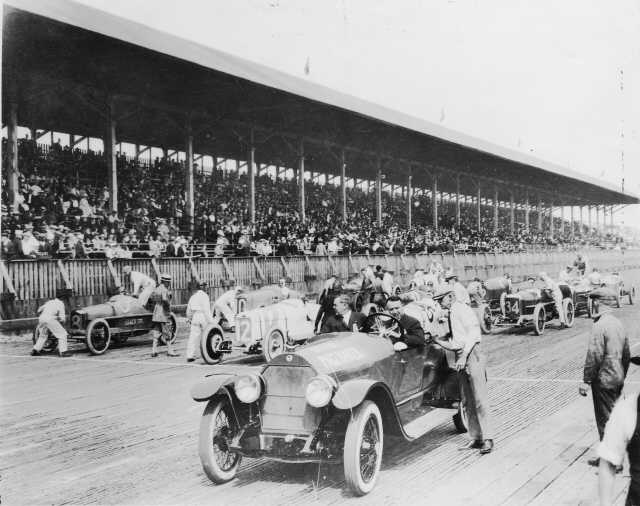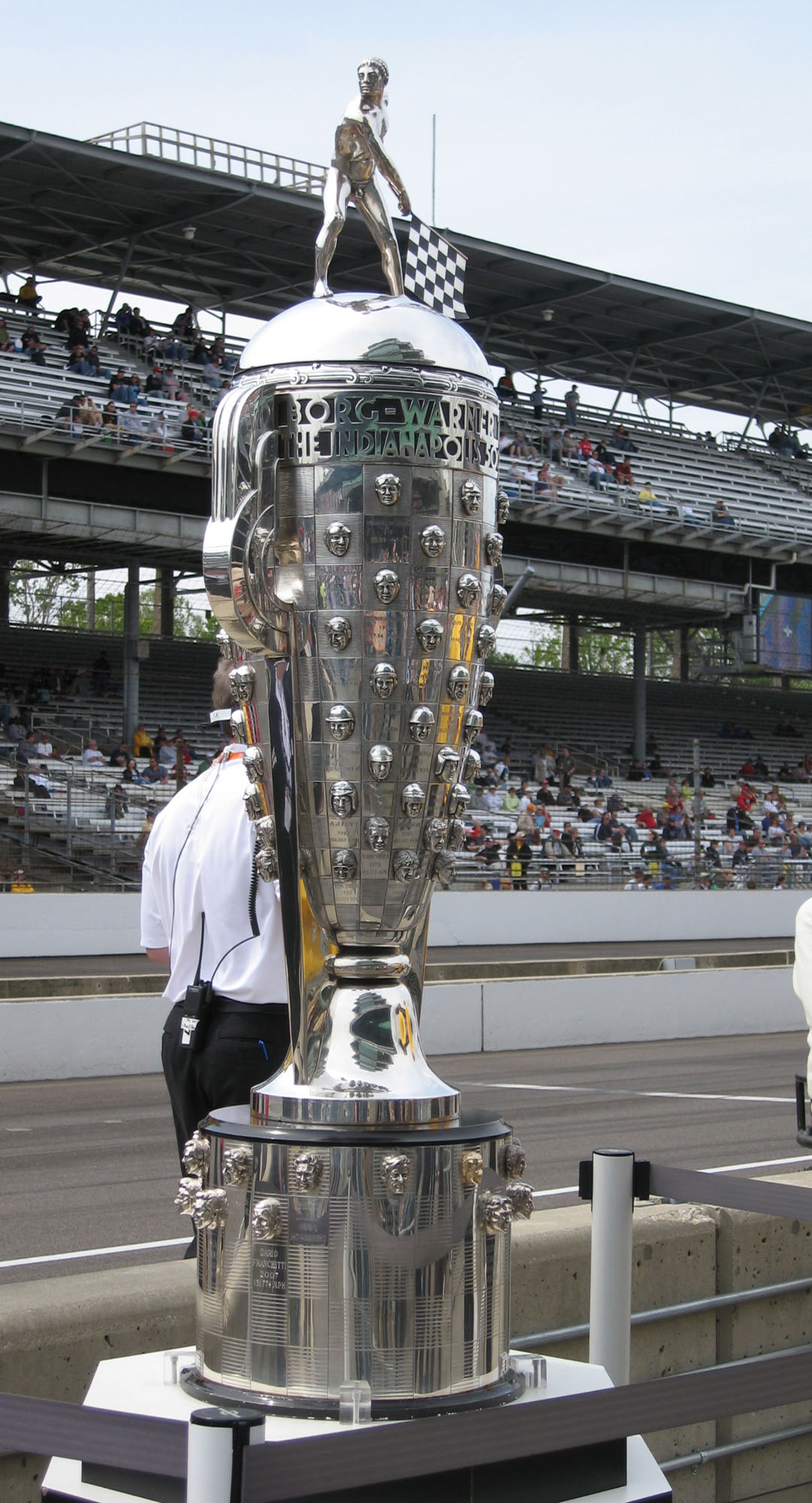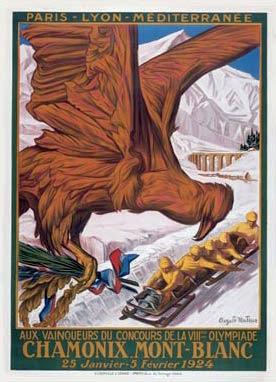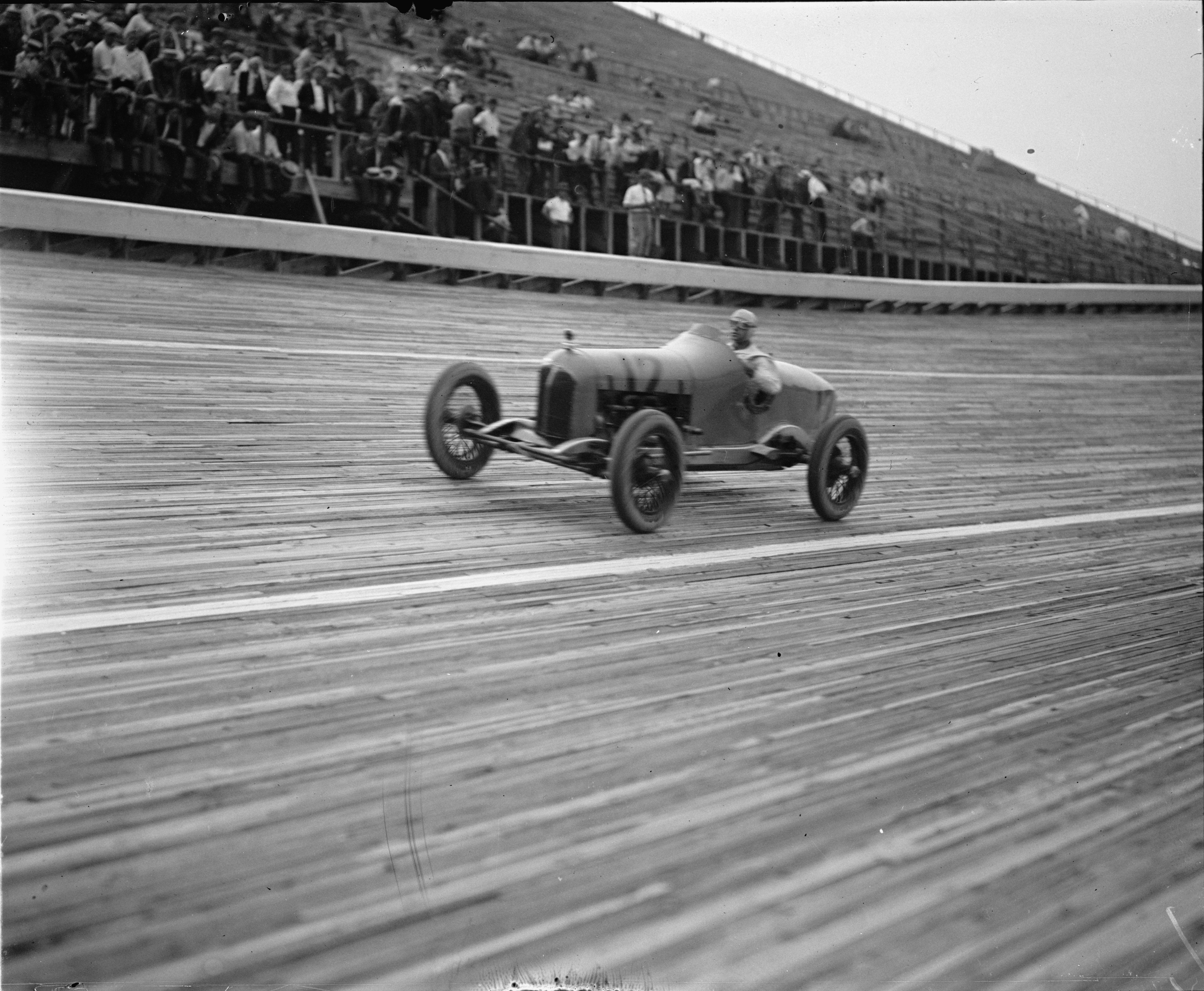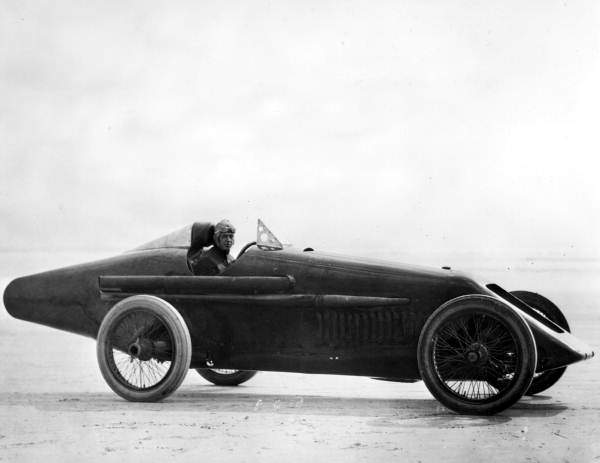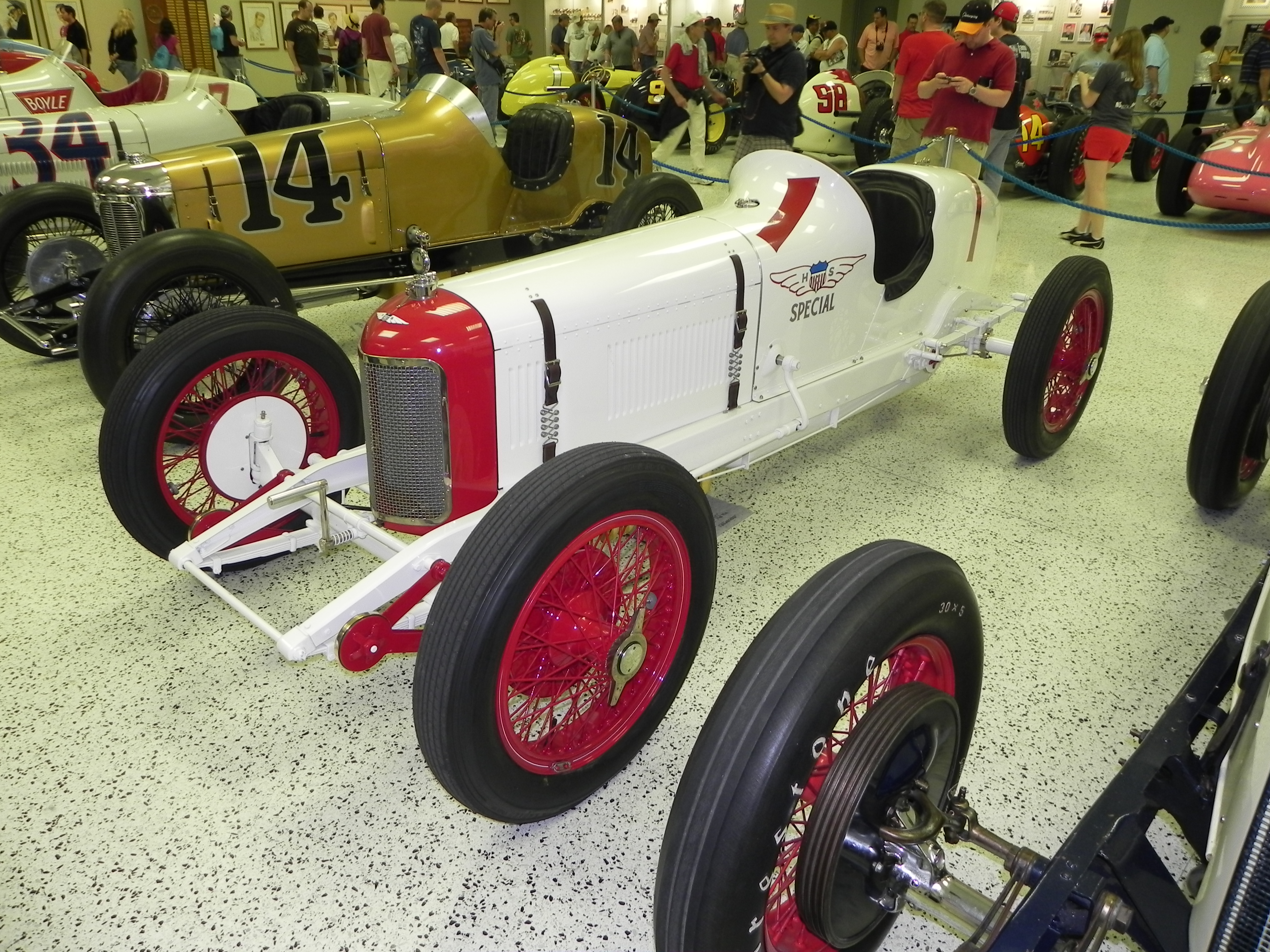|
Joe Boyer
Joseph Boyer Jr. (May 30, 1890 – September 2, 1924) was an American racing driver, and a winner of the 1924 Indianapolis 500. Early life Boyer was born on May 30, 1890, in St. Louis, Missouri and grew up in Detroit, Michigan, the son of Joe Boyer Senior and Clara Libby. He became wealthy due to his father owning Burroughs Adding Machine Company and Chicago Numatic. Racing career At the 1924 Indianapolis 500, Boyer participated in two different cars during the race. In his original entry (#9), he qualified 4th. Boyer experienced mechanical troubles, and on the 109th lap he was given relief. His relief driver went on to race that car until lap 176, when he crashed in Turn 1. On lap 111, Boyer took over car #15 from L. L. Corum. Boyer charged to the front of the field, and led the last 24 laps in Corum's car. Corum and Boyer were scored as "co-winners," the first time in Indianapolis 500 history such a designation had been assigned. In three previous Indianapolis 500s (1 ... [...More Info...] [...Related Items...] OR: [Wikipedia] [Google] [Baidu] |
Tacoma Speedway
Tacoma Speedway (sometimes called Pacific Speedway or Tacoma-Pacific Speedway) was a (approximate) wooden board track for automobile racing that operated from 1914 to 1922 near Tacoma, Washington. In its time, the track was renowned nationwide and was considered by some to be second only to the Indianapolis Motor Speedway. Notable racers such as Barney Oldfield, Eddie Rickenbacker, Ralph DePalma, and both Louis and Gaston Chevrolet, were drawn to race for purses of up to $25,000 (approximately $573,000 in 2012 dollars). Before long, the track acquired a reputation for being dangerous. After an arson fire destroyed the wooden grandstands in 1920, the facility was rebuilt but failed financially and racing ended two years later. The site later became an airport and then a naval supply depot during World War II, and today is occupied by the campus of Clover Park Technical College and neighboring commercial sites in Lakewood, Washington. Beginnings 1912–1914 In 1912, a group of bus ... [...More Info...] [...Related Items...] OR: [Wikipedia] [Google] [Baidu] |
Michigan Motor Sports Hall Of Fame
The Michigan Motor Sports Hall of Fame is a non-profit hall of fame for Michigan auto racers. It was founded in 1982 by Dick Lee and was incorporated April 19, 1982, as a non-profit 501(c) (3) non-stock Michigan corporation. The Michigan Motor Sports Hall of Fame display is currently located at the Gilmore Car Museum in Hickory Corners. It is in conjunction with their "History of Stock Car Racing" display. The Michigan Motor Sports Hall of Fame exhibit was located at the R. E. Olds Transportation Museum in Lansing from 1994 thru 2006. Mission statement The initiation of the Michigan Motor Sports Hall of Fame was to: *Preserve the history of all types of motor racing in the state of Michigan, and make this history available to the public. *Recognize and pay tribute to those citizens of Michigan who have given of themselves, whatever their roles in racing may have been. *Enshrine and acknowledge the deeds of those people that excelled in motor sports. *Have a permanent museum w ... [...More Info...] [...Related Items...] OR: [Wikipedia] [Google] [Baidu] |
Racing Drivers Who Died While Racing
In sports, racing is a competition of speed, in which competitors try to complete a given task in the shortest amount of time. Typically this involves traversing some distance, but it can be any other task involving speed to reach a specific goal. A race may be run continuously to finish or may be made up of several segments called heats, stages or legs. A heat is usually run over the same course at different times. A stage is a shorter section of a much longer course or a time trial. Early records of races are evident on pottery from ancient Greece, which depicted running men vying for first place. A chariot race is described in Homer's ''Iliad''. Etymology The word ''race'' comes from a Norse word. This Norse word arrived in France during the invading of Normandy and gave the word ''raz'' which means "swift water" in Brittany, as in a mill race; it can be found in "Pointe du Raz" (the most western point of France, in Brittany), and "''raz-de-marée''" (tsunami). The word ra ... [...More Info...] [...Related Items...] OR: [Wikipedia] [Google] [Baidu] |
Racing Drivers From Detroit
In sport, sports, racing is a competition of speed, in which competitors try to complete a given task in the shortest amount of time. Typically this involves :wikt:traverse, traversing some distance, but it can be any other task involving speed to reach a specific goal. A race may be run continuously to finish or may be made up of several segments called heats, Race stage, stages or legs. A heat is usually run over the same course at different times. A stage is a shorter section of a much longer course or a Individual time trial, time trial. Early records of races are evident on pottery from ancient Greece, which depicted running men vying for first place. A chariot racing, chariot race is described in Homer's ''Iliad''. Etymology The word ''race'' comes from a Old Norse, Norse word. This Norse word arrived in France during the invading of Normandy and gave the word ''raz'' which means "swift water" in Brittany, as in a mill race; it can be found in "Pointe du Raz" (the most we ... [...More Info...] [...Related Items...] OR: [Wikipedia] [Google] [Baidu] |
Indianapolis 500 Winners
The Indianapolis 500 (also called the Indianapolis 500-Mile Race) is an annual American open-wheel car race held on American Memorial Day weekend at the Indianapolis Motor Speedway (IMS), in Speedway, Indiana. It was first held in 1911 after the track's owners had experimented with several other long-distance auto races over the previous two years. The race was not held in 1917 or 1918 and again from 1942 to 1945 because of war. It was administered by the American Automobile Association between 1911 and 1955, then by the United States Auto Club from 1956 to 1997, and finally by the Indy Racing League/IndyCar beginning in 1998. The event usually covers 200 laps over a total distance of . Each winning racer and team is presented with a small replica of the Art Deco Art Deco, short for the French (), is a style of visual arts, architecture, and product design that first Art Deco in Paris, appeared in Paris in the 1910s just before World War I and flourished in the United ... [...More Info...] [...Related Items...] OR: [Wikipedia] [Google] [Baidu] |
Indianapolis 500 Drivers
Indianapolis ( ), colloquially known as Indy, is the List of capitals in the United States, capital and List of municipalities in Indiana, most populous city of the U.S. state of Indiana and the county seat of Marion County, Indiana, Marion County. Indianapolis is situated in the state's central till plain region along the west fork of the White River (Indiana), White River. The city's official slogan, "Crossroads of America", reflects its historic importance as a transportation hub and its relative proximity to other major North American markets. At the 2020 United States census, 2020 census, the Indianapolis (balance), balance population was 887,642. Indianapolis is the List of United States cities by population, 16th-most populous city in the U.S., the third-most populous city in the Midwestern United States, Midwest after Chicago and Columbus, Ohio, and the fourth-most populous state capital in the nation after Phoenix, Arizona, Phoenix, Austin, Texas, Austin, and Columbu ... [...More Info...] [...Related Items...] OR: [Wikipedia] [Google] [Baidu] |
1924 Deaths
Events January * January 12 – Gopinath Saha shoots Ernest Day, whom he has mistaken for Sir Charles Tegart, the police commissioner of Calcutta, and is arrested soon after. * January 20–January 30, 30 – Kuomintang in China holds its 1st National Congress of the Kuomintang, first National Congress, initiating a policy of alliance with the Soviet Union and the Chinese Communist Party. * January 21 – Alexander Cambridge, 1st Earl of Athlone, The Earl of Athlone is appointed Governor-General of the Union of South Africa, and High Commissioner for Southern Africa.Archontology.org: A Guide for Study of Historical Offices: South Africa: Governors-General: 1910-1961 (Accessed on 14 April 2017) * January 22 – R ... [...More Info...] [...Related Items...] OR: [Wikipedia] [Google] [Baidu] |
1890 Births
Events January * January 1 – The Kingdom of Italy establishes Eritrea as its colony in the Horn of Africa. * January 2 – Alice Sanger becomes the first female staffer in the White House. * January 11 – 1890 British Ultimatum: The United Kingdom demands Portugal withdraw its forces from the land between the Portuguese colonies of Portuguese Mozambique, Mozambique and Portuguese Angola, Angola (most of present-day Zimbabwe and Zambia). * January 15 – Ballet ''The Sleeping Beauty (ballet), The Sleeping Beauty'', with music by Pyotr Ilyich Tchaikovsky, Tchaikovsky, is premiered at the Mariinsky Theatre, Imperial Mariinsky Theatre in Saint Petersburg, St. Petersburg, Russia. * January 25 ** The United Mine Workers of America is founded. ** American journalist Nellie Bly completes her round-the-world journey in 72 days. February * February 5 – The worldwide insurance and financial service brand Allianz is founded in Berlin, Germany. * February 18 – The National Americ ... [...More Info...] [...Related Items...] OR: [Wikipedia] [Google] [Baidu] |
Peter DePaolo
Peter DePaolo (April 6, 1898 – November 26, 1980) was an American racing driver who is remembered as one of the greatest racers of his generation. He won the 1925 Indianapolis 500, and was a two-time National Champion, winning in 1925 and 1927. Early life Peter DePaolo was born on April 6, 1898, in Philadelphia, Pennsylvania. Pete saw his first race in 1919, where he watched his uncle Ralph DePalma win from Pete's perch as DePalma's riding mechanic. Driving career DePaolo drove in the 1922 Indianapolis 500, finishing fourth. He suffered his worst career injury at the Kansas City board track; his car rolled four times. He spent three weeks in the hospital with a severely cut up face and two lost teeth. Both men had been thrown from car and his riding mechanic Harry "Cotton" Henning pulled DePaolo from the car. Henning spent several months in the hospital with a broken ankle and broken ribs. At the 1925 Indianapolis 500, DePaolo pulled out to a huge lead. DePaolo's strat ... [...More Info...] [...Related Items...] OR: [Wikipedia] [Google] [Baidu] |
List Of Indianapolis 500 Winners
The Indianapolis 500 (also called the Indianapolis 500-Mile Race) is an annual American open-wheel car race held on American Memorial Day weekend at the Indianapolis Motor Speedway (IMS), in Speedway, Indiana. It was first held in 1911 after the track's owners had experimented with several other long-distance auto races over the previous two years. The race was not held in 1917 or 1918 and again from 1942 to 1945 because of war. It was administered by the American Automobile Association between 1911 and 1955, then by the United States Auto Club from 1956 to 1997, and finally by the Indy Racing League/IndyCar beginning in 1998. The event usually covers 200 laps over a total distance of . Each winning racer and team is presented with a small replica of the Art Deco sterling silver Borg-Warner Trophy, a replica of the pace car, a large sum of money, and a championship ring as prizes for winning the race. In the 109 editions of the Indianapolis 500 that have occurred as of t ... [...More Info...] [...Related Items...] OR: [Wikipedia] [Google] [Baidu] |
Tommy Milton
Thomas Willard Milton (November 14, 1893 – July 10, 1962) was an American racing driver best known as the first two-time winner of the Indianapolis 500. In spite of having only one functional eye, Milton came to be known as one of the finest racers of his generation. Early life Milton was born in St. Paul, Minnesota, on November 14, 1893. Racing career Milton began his career in racing in 1914, competing on dirt tracks in the Midwestern United States. By 1917, he was competing nationwide, and earned his first major win at a track in Providence, Rhode Island. In 1919, he was one of the dominant figures in American racing, winning five of the nine championship races including the Elgin National Road Races, the International Sweepstakes at Sheepshead Bay, New York, and made his debut at the Indianapolis 500. Later that year he suffered severe burns when his car burst into flames during a race at Uniontown, Pennsylvania. He returned to the track the following year to win th ... [...More Info...] [...Related Items...] OR: [Wikipedia] [Google] [Baidu] |
1923 Indianapolis 500
The 11th International 500-Mile Sweepstakes Race was held at the Indianapolis Motor Speedway on Wednesday, May 30, 1923. After winning previously in 1921 Indianapolis 500, 1921, Tommy Milton became the first multiple winner of the Indianapolis 500. Howdy Wilcox (the 1919 Indianapolis 500, 1919 winner) drove relief for Milton in laps 103–151. During the break, Milton had to have his hands bandaged due to blisters, and changed his shoes due to crimping of his toes. On lap 22, Tom Alley (driving Earl Cooper's entry) wrecked on the backstretch, going through the wall, and List of fatalities at the Indianapolis Motor Speedway, killed 16-year-old spectator Bert Shoup. Alley and two other spectators were injured. Memorial Day controversy In January 1923, about four months before the race, the Indiana General Assembly, Indiana Legislature passed a bill prohibiting commercialized sporting events, including the Indianapolis 500, from being held on Memorial Day. Some veterans groups, an ... [...More Info...] [...Related Items...] OR: [Wikipedia] [Google] [Baidu] |
